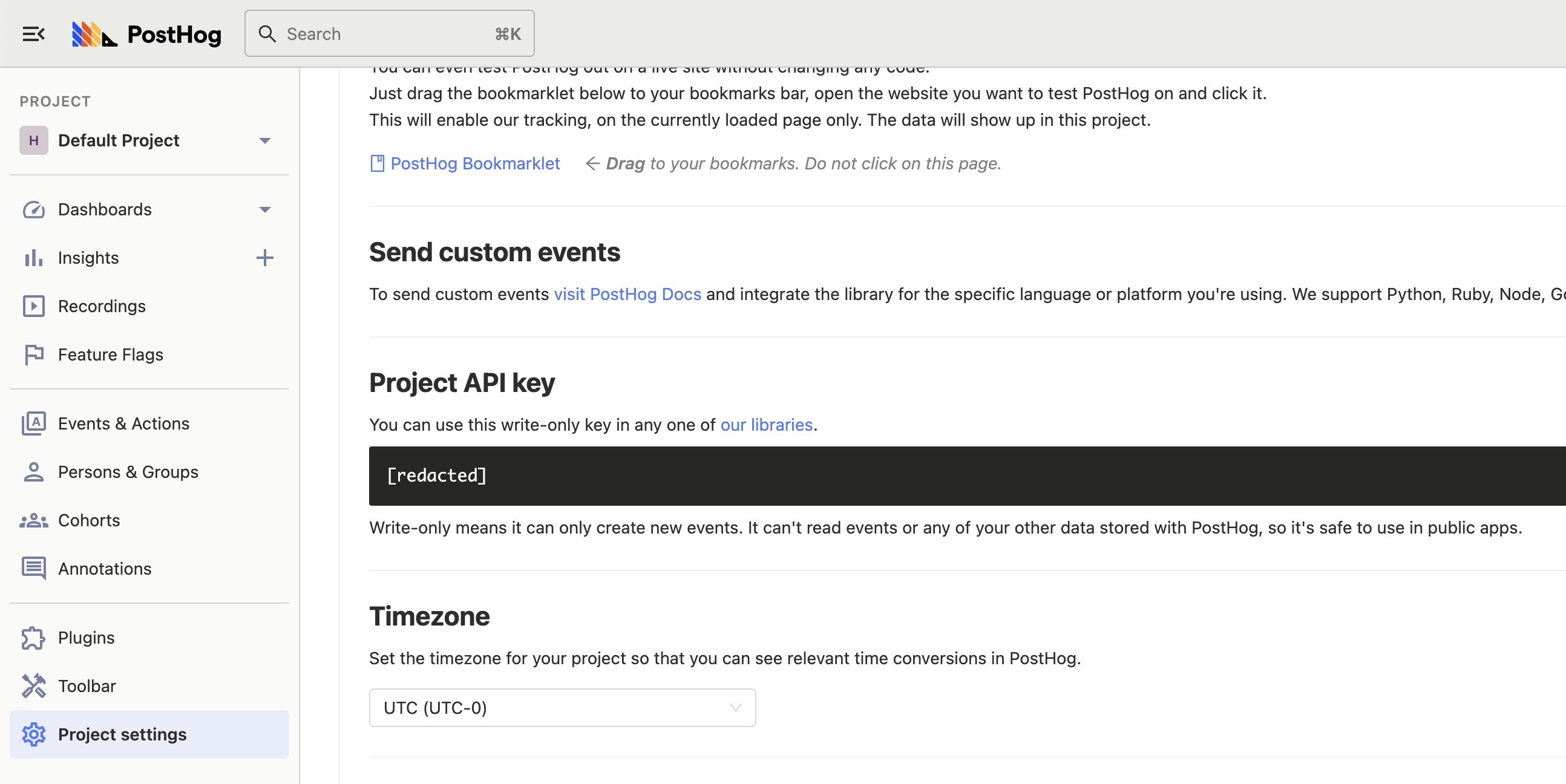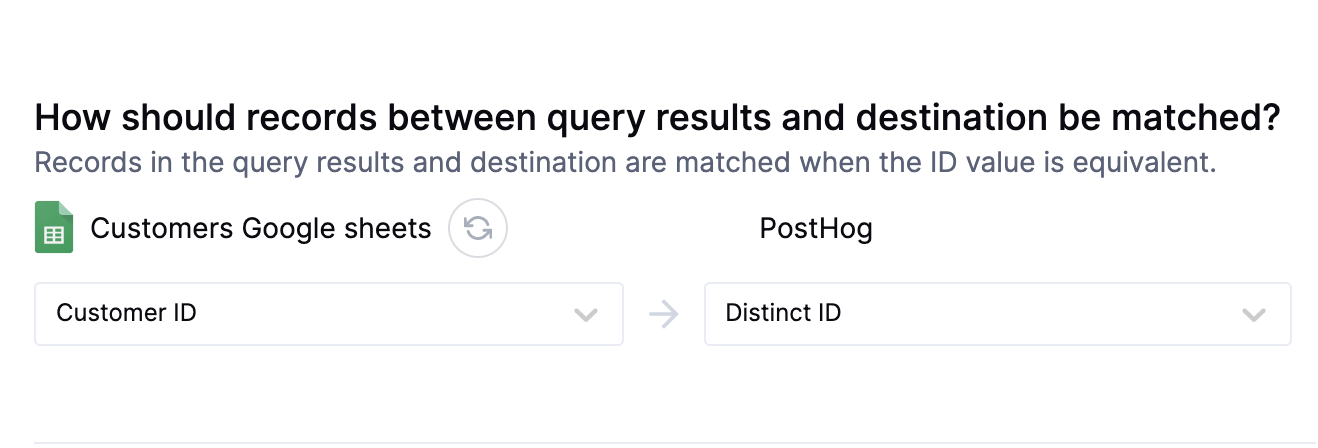Push user behavior data from your warehouse into PostHog
Setup
After selecting PostHog from our destinations catalog, you will be required to enter your PostHog Project API Key and Public URL.
- You can locate your Project API key within your PostHog account by navigating to your PostHog project > Project Settings > Project API key.

- If you are using the cloud-hosted version of PostHog, your Public URL will be https://app.posthog.com/batch/
- If you are using a self-hosted version of PostHog, replace https://app.posthog.com/ with the URL of your instance.
Hightouch supports syncing both Objects and Events to PostHog.
Syncing
Hightouch supports syncing to the following PostHog objects:
People(Persons)
Sync modes
Hightouch supports the following sync modes:
- Upsert - pushes new
Personobjects to PostHog and updates properties that change in your warehouse.
Record matching
Person records can be matched from your source to your PostHog workspace by Distinct ID (distinct_id), which is a unique identifier
in PostHog for each Person.

Field mapping
You may also sync columns from your source to PostHog's Person properties. PostHog doesn't provide information on properties set for People objects,
so you will need to type the exact name of the property you would like to map to in PostHog. These property names must be spelled correctly and are case-sensitive.

Sending events to PostHog
The PostHog integration also allows you to send events to PostHog with custom properties.
The four elements of any PostHog event are the Event Name (required, which can be a single string used to name all events, or pulled from your warehouse per event), a Timestamp (optional, in ISO 1806 format, or a Unix timestamp in milliseconds), a Distinct ID (required, the unique ID of the user corresponding to the event), and event properties.

You can also map properties that will become event properties in PostHog, just as you would for object properties.
